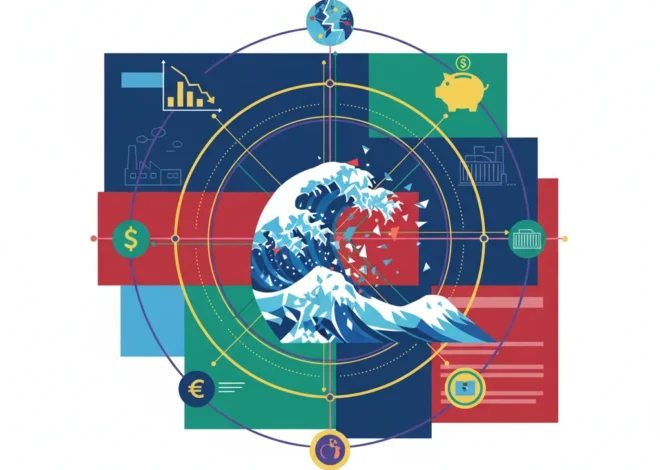
Solving the Financial Puzzle: Why Today’s Economy is the Ultimate Crossword
For many, the morning ritual isn’t complete without a cup of coffee and a crossword puzzle. It’s a mental warm-up, a satisfying challenge of logic, language, and pattern recognition. The Financial Times, known for its intricate puzzles like Number 18,198, offers a daily test of wit. But what if we viewed the entire world of finance, investing, and economics through the same lens? The global market is, in essence, the ultimate crossword—a vast grid of interconnected clues where macroeconomic trends, technological disruptions, and individual company performance intersect.
Successfully navigating this puzzle doesn’t require knowing every single answer. Instead, it demands a strategic approach: understanding the long “across” clues that define the grid’s structure, deciphering the vertical “down” clues that reveal specific opportunities, and having the wisdom to know which blanks are best left for another day. For investors, finance professionals, and business leaders, mastering this financial crossword is the key to building wealth and resilience in an ever-shifting economic landscape.
The “Across” Clues: Decoding the Macroeconomic Landscape
In any crossword, the long “across” answers form the backbone of the puzzle. They provide the foundational letters that help you solve intersecting words. In the world of finance, these are the macroeconomic forces—the sweeping, horizontal trends that affect every sector and every asset class. Understanding them is the first step to seeing the bigger picture.
Key macroeconomic clues include:
- Interest Rates: Perhaps the most critical “across” clue, set by central banks like the Federal Reserve. Higher rates make borrowing more expensive, which can cool down the economy and temper inflation, but also potentially stifle growth and depress stock market valuations. Conversely, lower rates can stimulate economic activity. The recent period of rapid rate hikes to combat inflation has been a central theme, with the Fed’s target range hitting a 22-year high in 2023 (source).
- Inflation: This clue measures the rate at which the general level of prices for goods and services is rising, and subsequently, purchasing power is falling. High inflation erodes the value of cash and can force central banks to raise interest rates. For investors, it’s a puzzle of how to protect capital, often leading to increased interest in real assets or inflation-protected securities.
- GDP Growth: Gross Domestic Product is the broadest measure of a nation’s economic health. A strong GDP number (the “clue”) suggests a growing economy, which is generally positive for corporate earnings and markets. A weak or negative number can signal a recession, forcing a re-evaluation of investment strategies.
- Geopolitical Events: From trade wars to actual wars, global events are long, complex “across” clues that can dramatically re-shape the puzzle board overnight, impacting supply chains, commodity prices, and investor sentiment.
Solving for these clues requires a deep understanding of economics and a constant eye on data releases and central banking policy. They provide the context for every other decision you make.
Beyond the Slice: What Pizza Hut's UK Closures Reveal About the Shifting Economic Landscape
The “Down” Clues: Navigating Sector-Specific and Technological Shifts
If macroeconomic forces are the horizontal foundation, the “down” clues are the vertical, dynamic trends that create specific opportunities and risks. These are the industries, technologies, and disruptive forces that intersect with the broader economy. For the modern investor, no area is more dynamic than financial technology, or fintech.
The rise of fintech has fundamentally altered the financial services landscape. Traditional banking models are being challenged by nimble startups offering everything from digital payments and automated investing (robo-advisors) to peer-to-peer lending. One of the most talked-about, and often controversial, “down” clues in recent years has been blockchain and cryptocurrencies. While highly volatile, the underlying distributed ledger technology holds promise for revolutionizing everything from cross-border payments to supply chain management.
Consider the contrast between these two worlds:
| Feature | Traditional Banking | Fintech & Blockchain |
|---|---|---|
| Infrastructure | Centralized, legacy systems, physical branches | Decentralized, cloud-native, digital-first |
| Transaction Speed | Can take 1-3 business days (e.g., ACH) | Near-instant for many digital payments; varies for blockchain |
| Accessibility | Often requires physical presence, extensive paperwork | Accessible 24/7 via mobile app, simplified onboarding |
| Innovation Cycle | Slow, hampered by regulation and bureaucracy | Rapid, iterative, focused on user experience |
These “down” clues—like the growth of AI in trading, the shift to sustainable investing (ESG), or demographic changes impacting consumer behavior—don’t exist in a vacuum. They intersect with the “across” clues. For example, a high-interest-rate environment (an “across” clue) can make it harder for cash-burning fintech startups to secure funding, altering the solution for that part of the puzzle.
Filling in the Blanks: Crafting Your Personal Investment Strategy
With an understanding of the board’s structure, it’s time to start filling in the answers. This is your personal investment or business strategy. There is no single “right” way to solve the puzzle; it depends on your goals, risk tolerance, and time horizon.
Some investors are “clue-by-clue” solvers. They are active traders, focusing on short-term market movements, technical analysis, and the fast-paced world of trading. They might buy a stock based on a strong earnings report and sell it weeks later. This requires immense dedication and an ability to quickly process new information.
Others are “thematic” solvers. They identify a few key “across” and “down” themes—like the aging population, the green energy transition, or the rise of AI—and build a portfolio around them. This is a long-term approach to investing, betting that these powerful trends will create value over many years.
Many successful investors, however, take a more holistic, “corner-out” approach. They start by building a diversified core portfolio—often using low-cost index funds that track the entire stock market—and then selectively add individual stocks or sector bets around the edges. This approach, advocated by many financial experts, acknowledges the difficulty of consistently picking winners while still allowing for participation in specific growth stories. According to S&P’s SPIVA Scorecard, a large majority of active fund managers consistently fail to outperform their benchmark indexes over the long run, lending credence to this core-and-explore strategy.
Gove's High-Stakes Gamble: Can a 1.5 Million Home Target Reshape the UK Economy?
The Unsolvable Clues: Embracing Uncertainty and Risk
Every seasoned crossword solver knows the frustration of the unsolvable clue—the obscure word or arcane reference that stumps you completely. In finance, these are the “black swans,” the unpredictable events that no model can forecast. The 2008 financial crisis, the global pandemic, or a sudden technological breakthrough are all examples.
Trying to predict these events is a fool’s errand. Instead, the expert puzzle solver builds a grid that is resilient enough to withstand a few blank squares. In investing, this is the principle of diversification. By spreading investments across different asset classes (stocks, bonds, real estate), geographies, and industries, you ensure that a catastrophic failure in one part of your portfolio doesn’t destroy the entire picture. It’s the financial equivalent of not betting your entire solution on a single, dubious seven-letter word for “a mythical creature.”
Risk management is about acknowledging that your knowledge is incomplete. It’s about building a strategy that can succeed even if some of your assumptions—your “answers”—turn out to be wrong. This is perhaps the most profound lesson from the crossword analogy: the goal is not perfection, but progress and resilience.
The global economy is a puzzle that is never truly finished. The clues change, new words are added, and the rules sometimes shift mid-game. But by approaching it with the mindset of a master solver—studying the big picture, analyzing the details, strategizing your approach, and preparing for uncertainty—you can transform a daunting challenge into an engaging and rewarding pursuit. The next time you see a financial headline or a market report, don’t see it as a confusing data point. See it as another clue, another piece to help you solve the magnificent, ever-evolving financial crossword.


